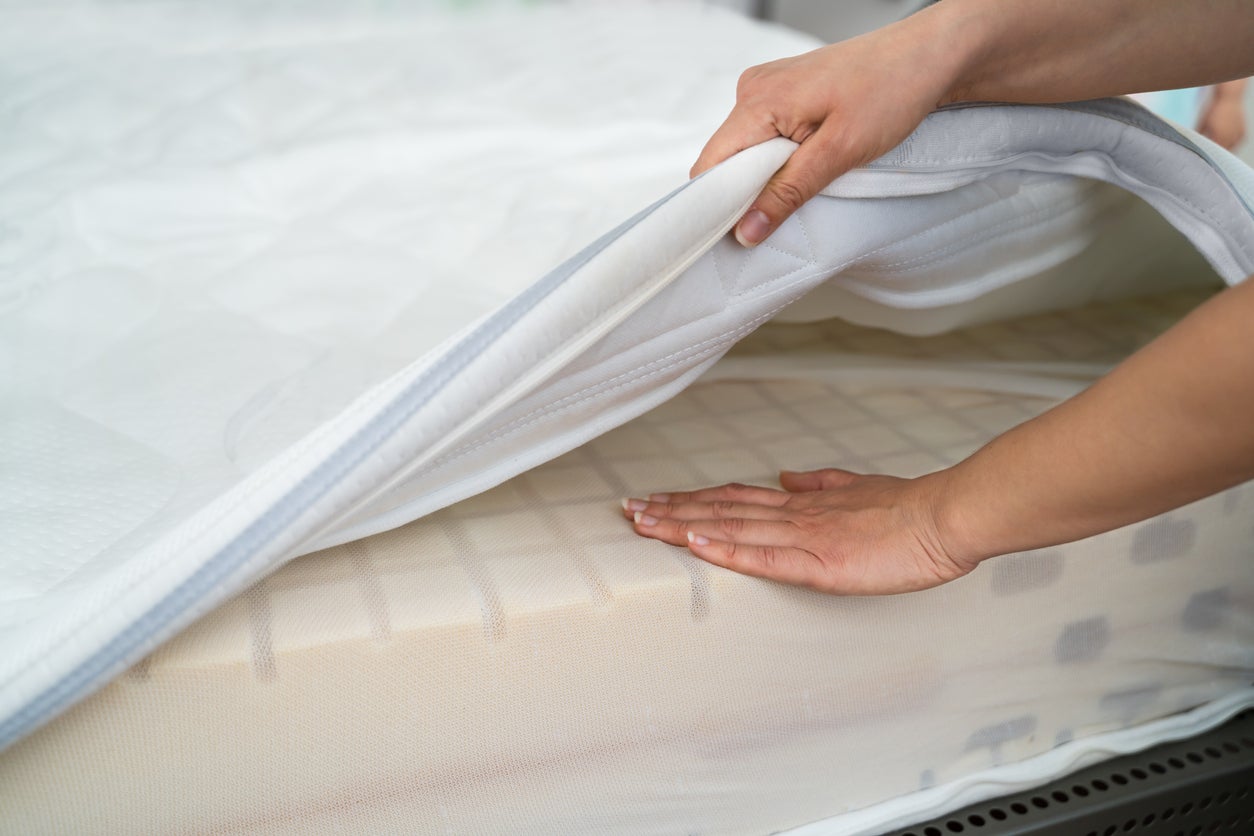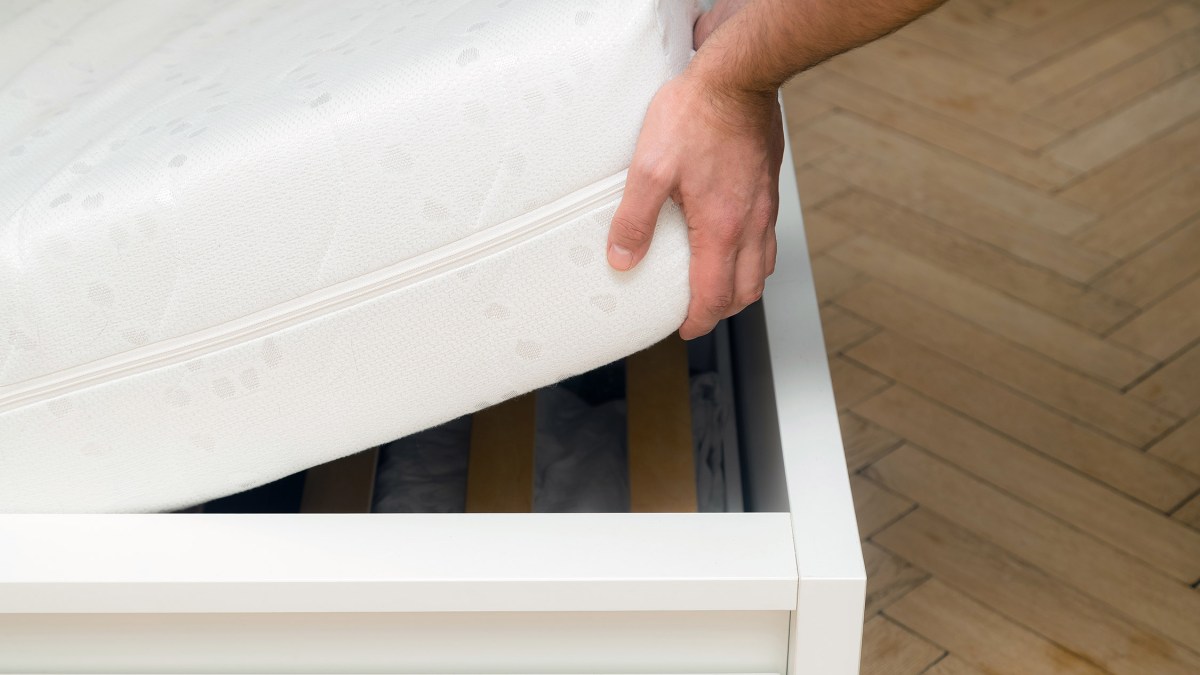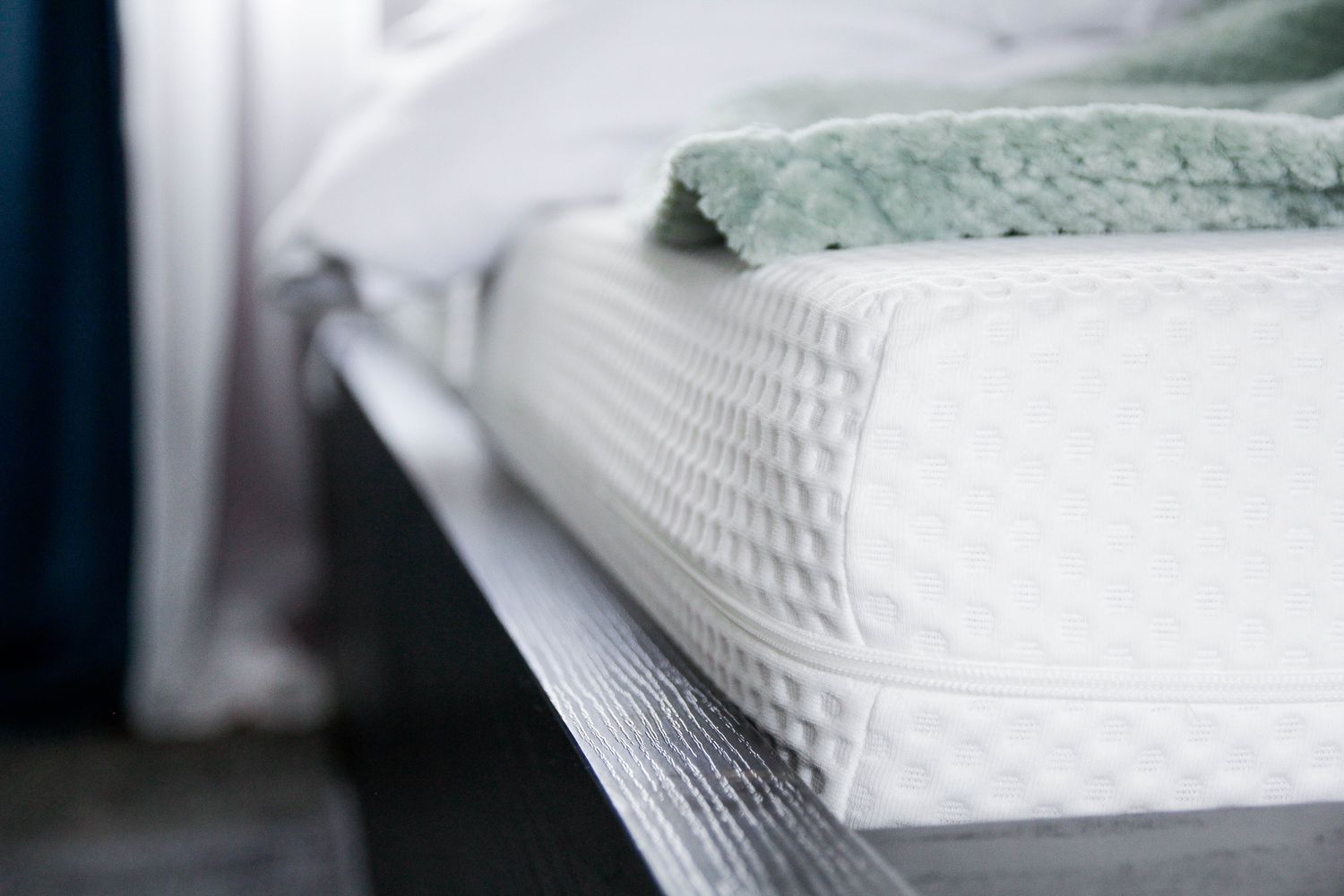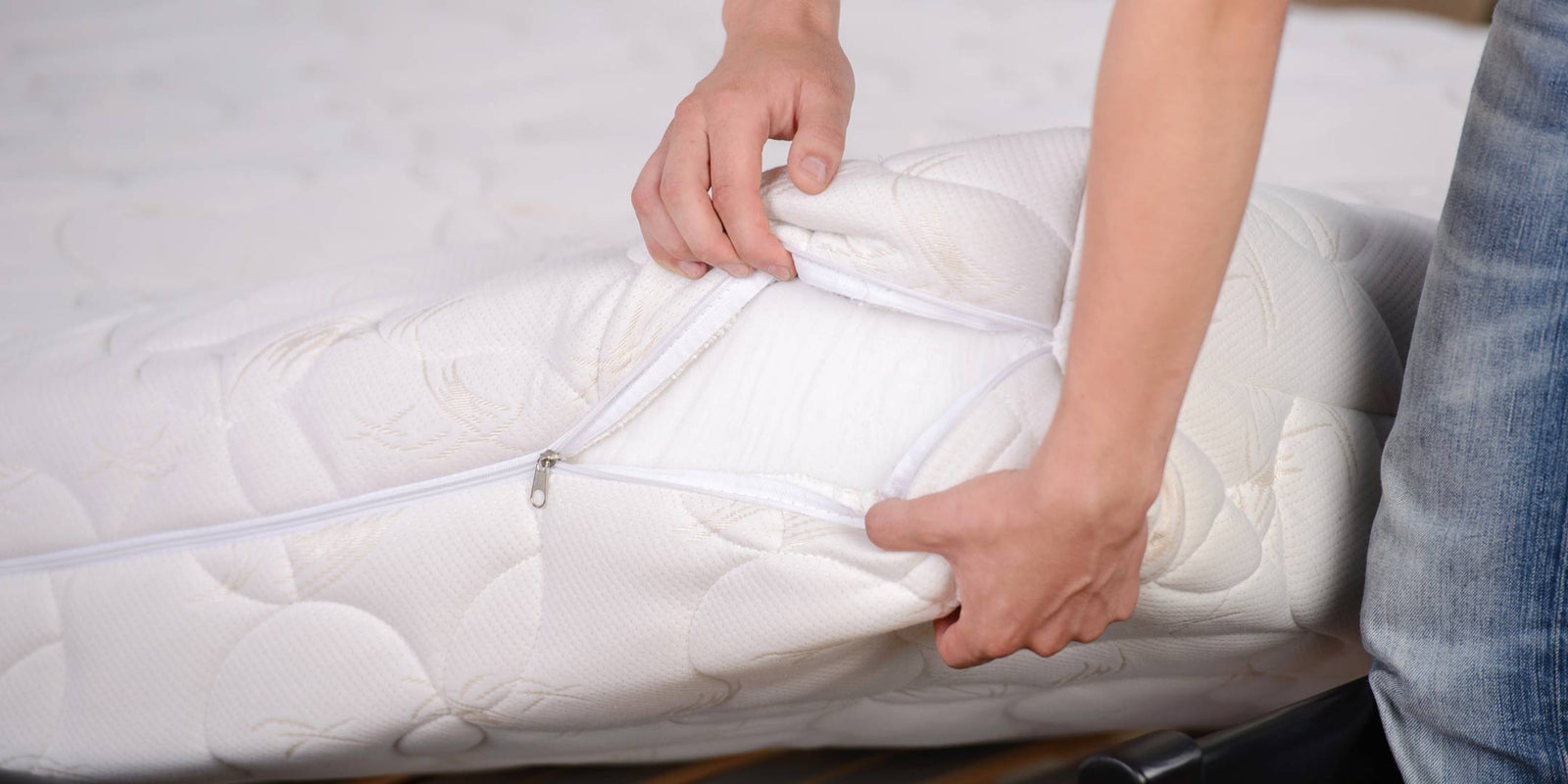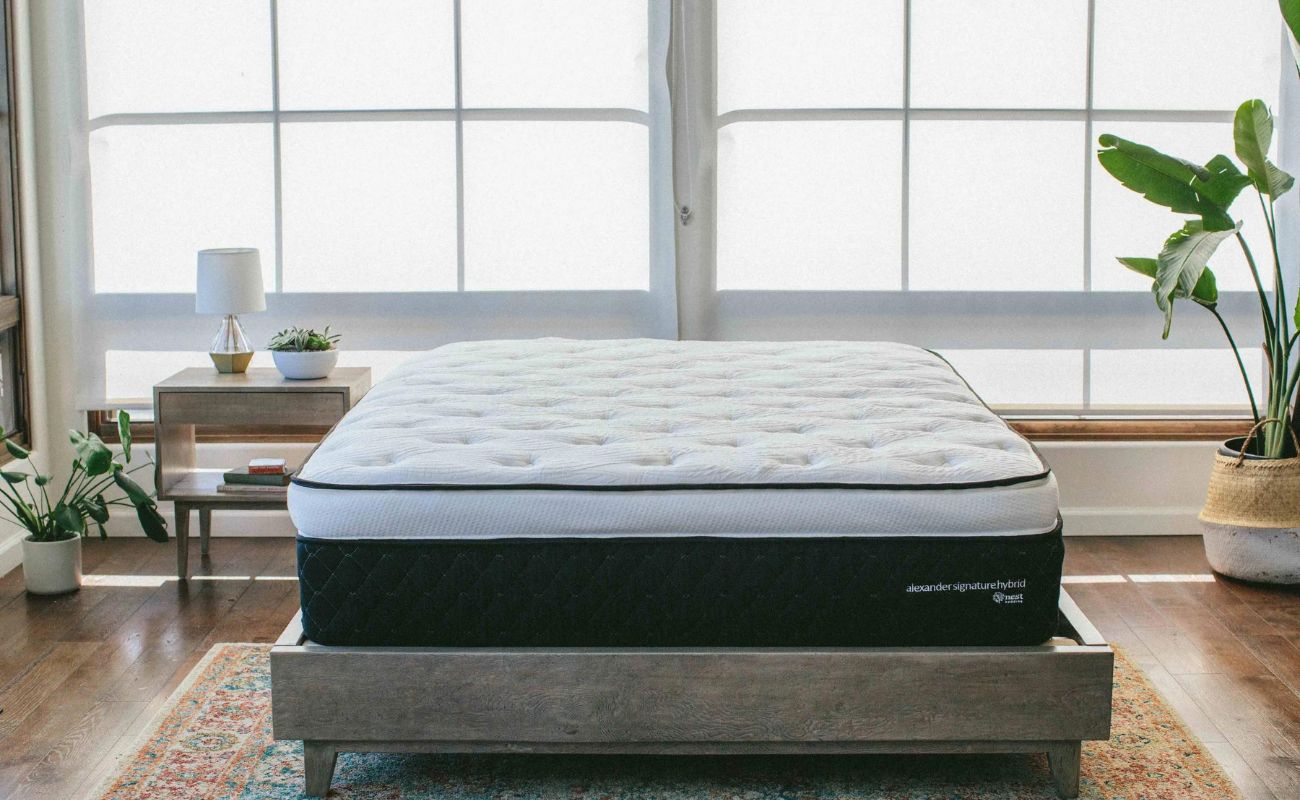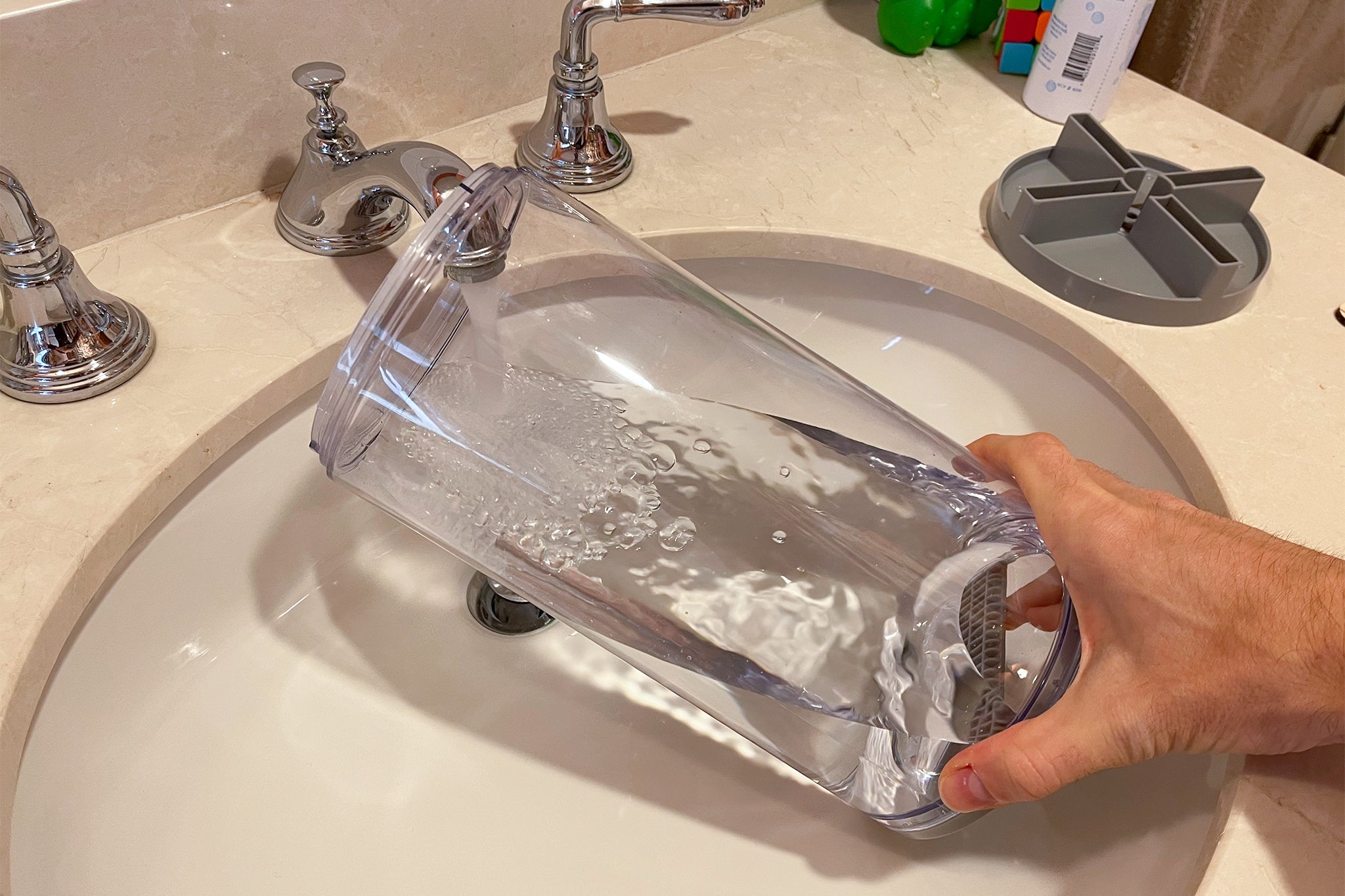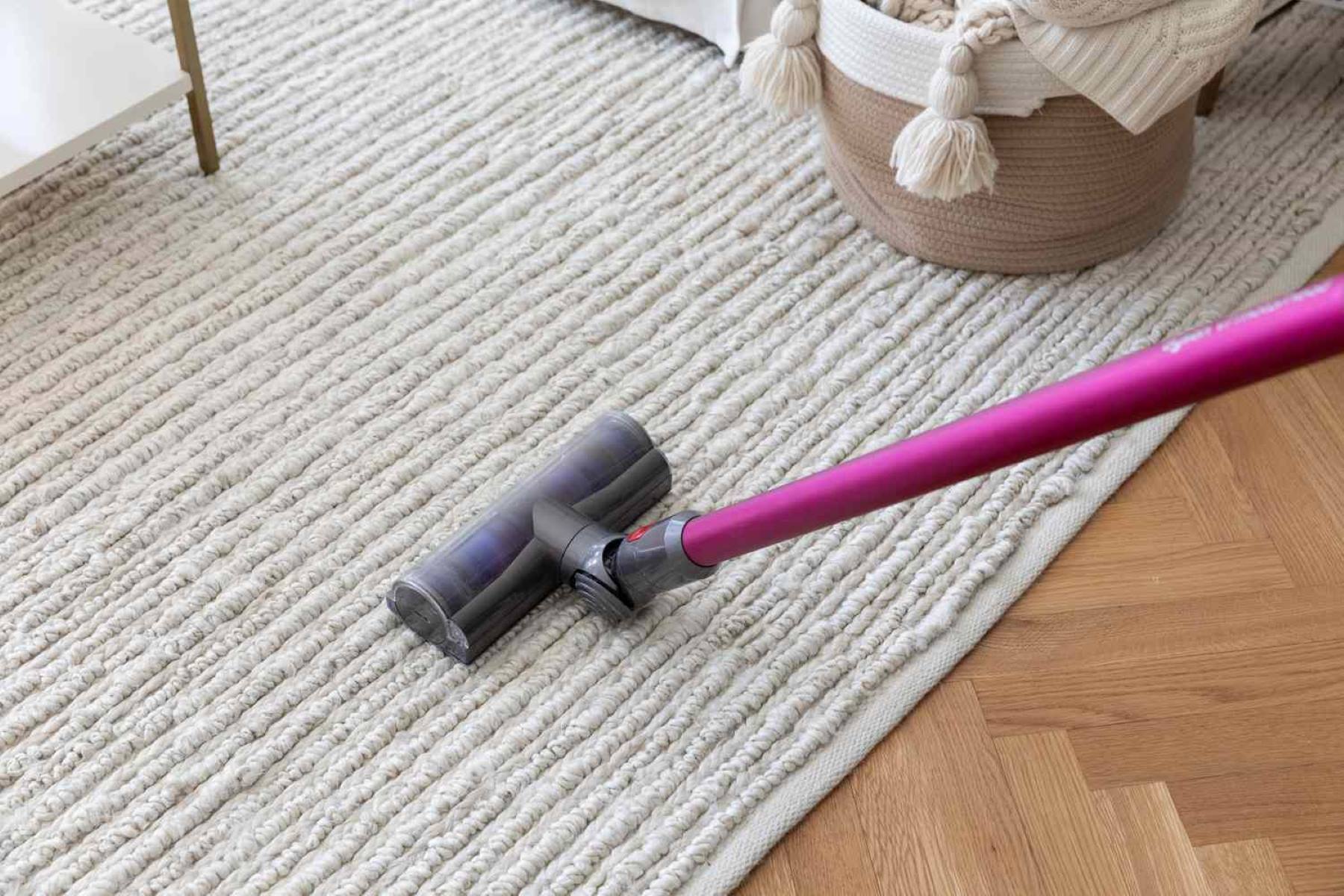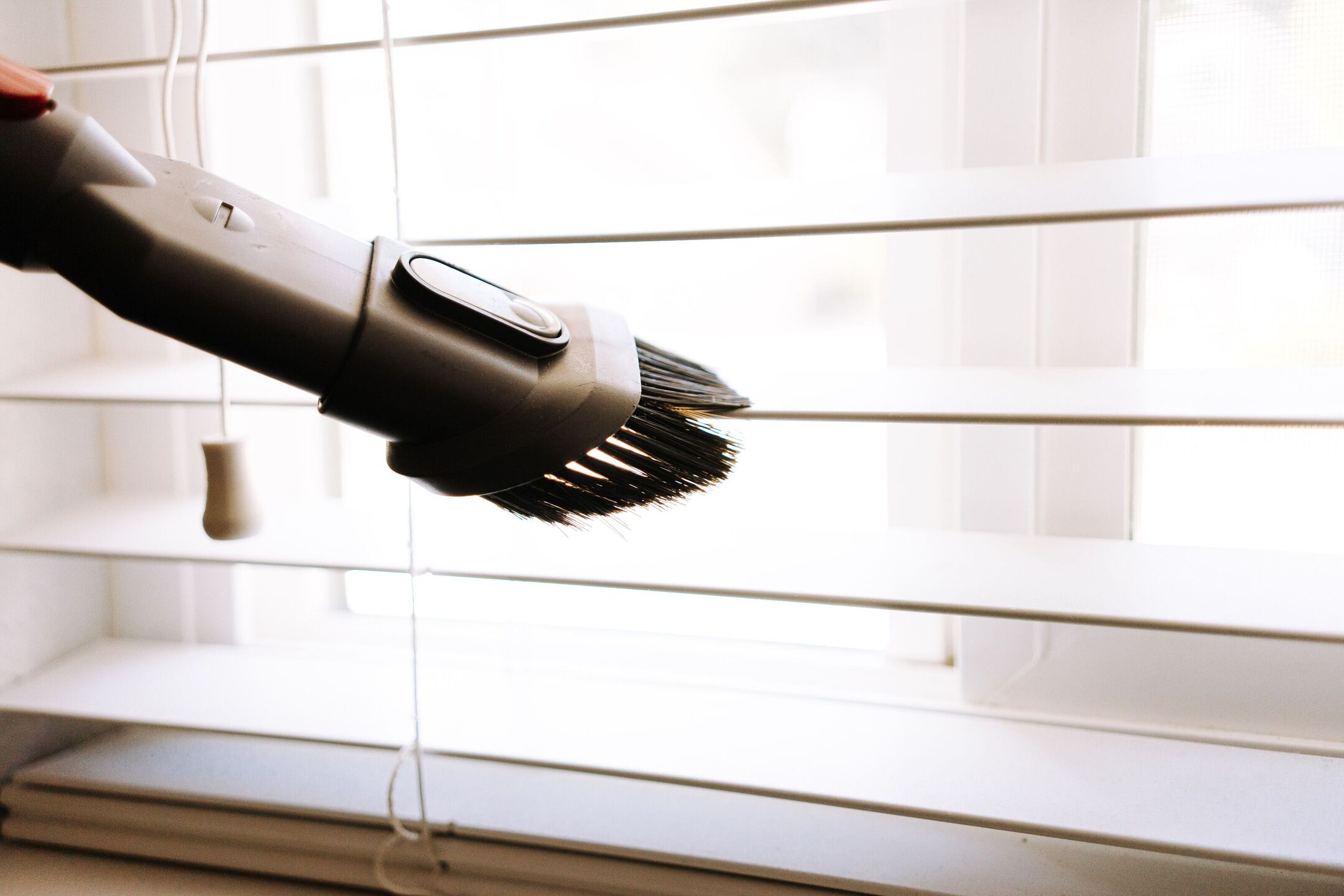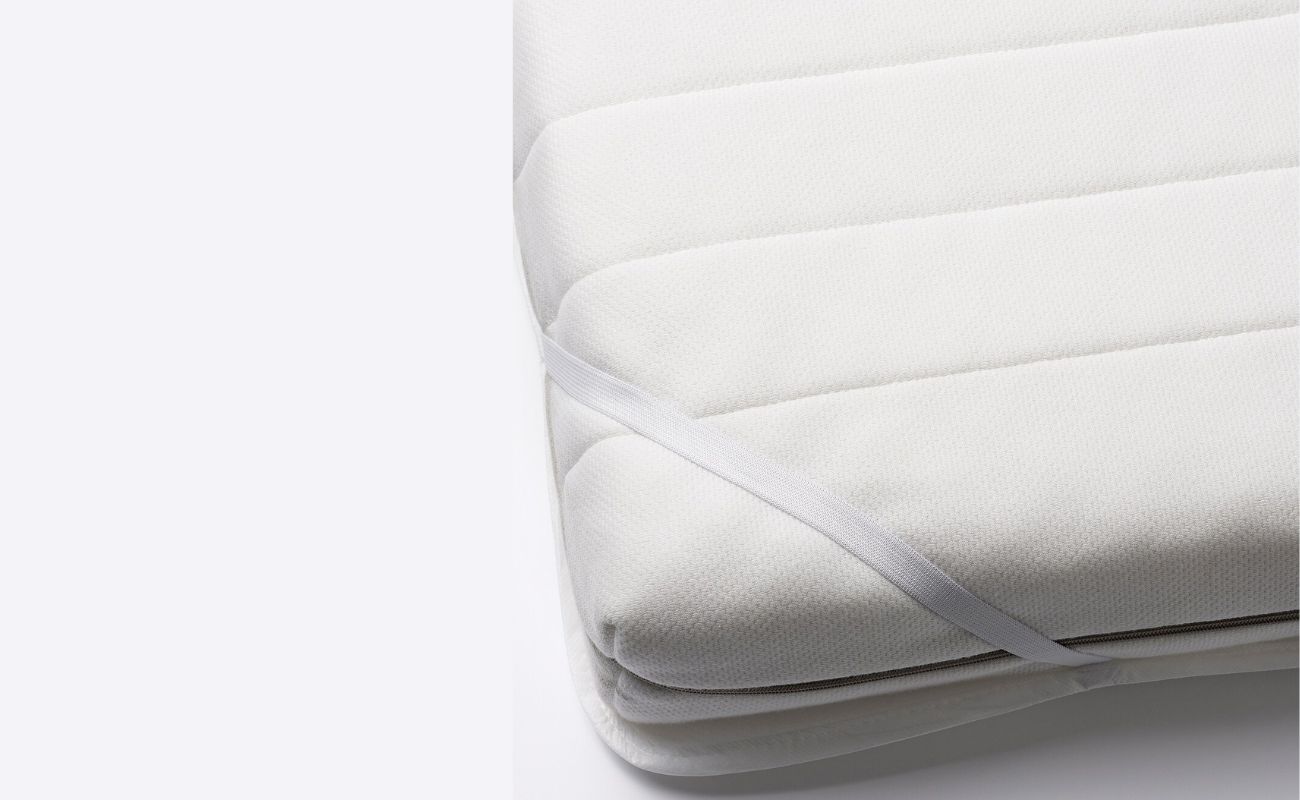Home>Furniture>Bedroom Furniture>How Often Are You Supposed To Flip Your Mattress
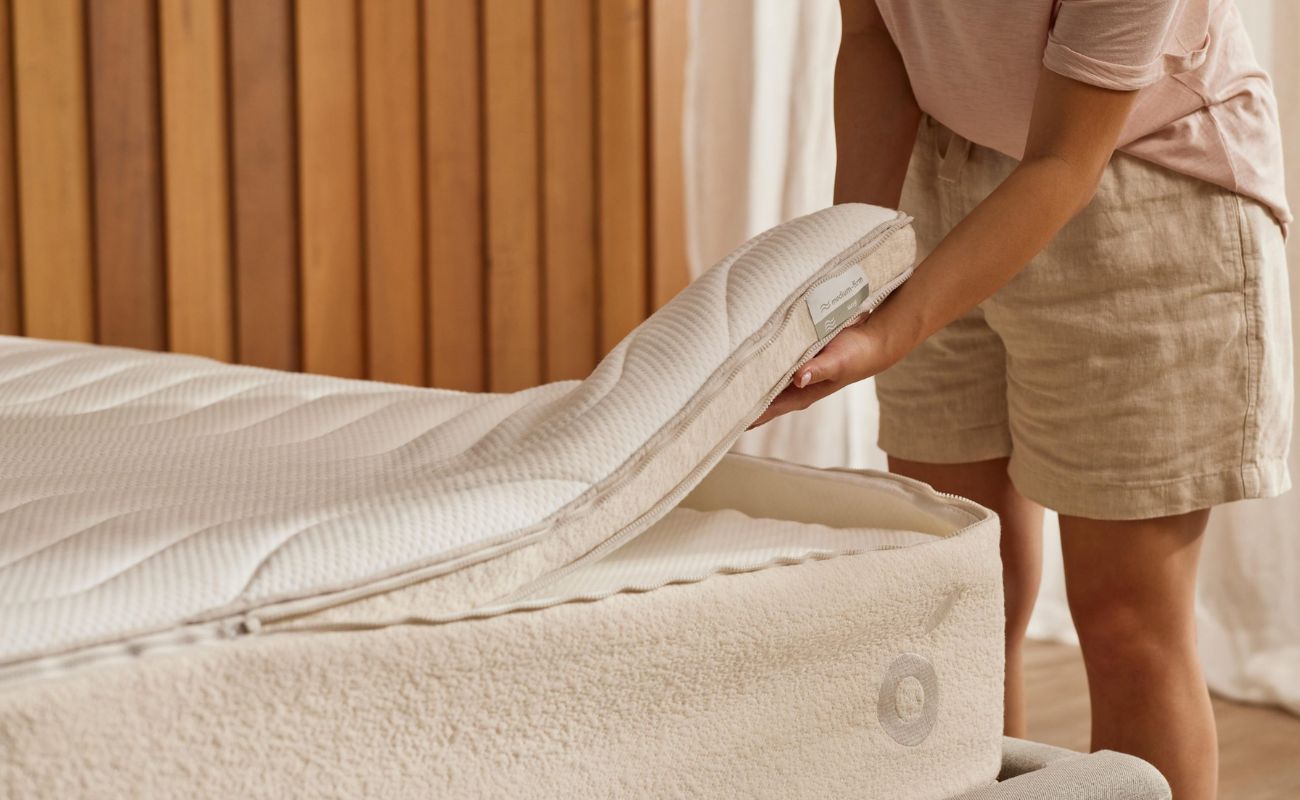

Bedroom Furniture
How Often Are You Supposed To Flip Your Mattress
Modified: January 9, 2024
Ensure the longevity of your bedroom furniture by learning how often you should flip your mattress. Discover the best practices for maintaining your comfort and support.
(Many of the links in this article redirect to a specific reviewed product. Your purchase of these products through affiliate links helps to generate commission for Storables.com, at no extra cost. Learn more)
Introduction
When it comes to ensuring a comfortable and restful night’s sleep, your mattress plays a crucial role. Over time, mattresses can start to sag, lose their shape, and develop uneven areas, leading to discomfort and poor sleep quality. To counteract these issues and extend the lifespan of your mattress, regular maintenance is essential. One commonly recommended maintenance practice is flipping your mattress.
The purpose of flipping your mattress is to evenly distribute the weight and pressure applied to it during sleep. By regularly flipping your mattress, you can help prevent sagging and prolong its overall durability. However, the question arises: how often should you flip your mattress?
In this article, we will delve into the importance of flipping your mattress and explore the recommended frequency for doing so. We will also discuss the factors to consider when flipping your mattress and provide alternative options to consider. So, let’s dive in and discover the benefits and techniques of mattress flipping!
Key Takeaways:
- Regularly flipping your mattress every six months to one year helps distribute weight, prevent sagging, and extend its lifespan, contributing to better sleep quality and comfort.
- If flipping is not possible, consider rotating the mattress, using a mattress topper, or investing in a dual-sided mattress to maintain its condition and maximize its lifespan.
Purpose of Flipping Your Mattress
Flipping your mattress serves several important purposes in maintaining its longevity and preserving your sleep quality. Let’s take a closer look at the primary reasons why flipping your mattress is beneficial:
- Even distribution of weight: When you sleep on the same side of your mattress night after night, it can lead to uneven wear and tear. By flipping your mattress, you distribute the weight more evenly, preventing excessive compression in certain areas and reducing the chances of sagging.
- Preserving mattress shape: Over time, the constant pressure applied to your mattress can cause it to conform to your body shape. Flipping the mattress helps it regain its original shape and prevents the formation of permanent indentations, ensuring even support throughout.
- Improving mattress hygiene: Flipping your mattress provides an opportunity for thorough cleaning and aeration. It allows you to remove any accumulated dust, allergens, or debris that may have settled on the surface. This promotes better indoor air quality, reducing the risk of allergies and respiratory issues.
- Increasing mattress durability: Regularly flipping your mattress can significantly extend its lifespan. By reducing stress on specific areas, you minimize the potential for material breakdown and premature wear, which can save you money in the long run by delaying the need for a new mattress purchase.
- Enhancing sleep comfort: As your mattress ages, certain areas may become less supportive, resulting in discomfort or pain. Flipping your mattress can help maintain a more balanced and supportive sleep surface, allowing you to enjoy a more comfortable night’s sleep.
Now that we understand the purpose of flipping your mattress, let’s explore how frequently you should undertake this maintenance task.
Benefits of Flipping Your Mattress
Regularly flipping your mattress can offer a multitude of benefits that go beyond just extending its lifespan. Let’s explore some of the key advantages:
- Improved mattress longevity: Flipping your mattress helps distribute the weight evenly, reducing the stress on specific areas. This can prevent premature wear and tear, ultimately extending the overall lifespan of your mattress.
- Minimized sagging: Over time, mattresses tend to sag, especially in areas where most of the body weight is concentrated. By flipping your mattress, you can help counteract this sagging and maintain a more supportive sleep surface.
- Enhanced comfort and support: As mattresses age, they may lose their original shape and firmness, leading to discomfort. By flipping your mattress, you can restore its shape and maintain a consistent level of support, ensuring a more comfortable sleeping experience.
- Better spine alignment: A mattress that has been regularly flipped tends to offer better spine alignment, reducing the risk of waking up with aches and pains. It promotes proper spinal alignment, which is crucial for maintaining good posture and overall spinal health.
- Reduced allergens and dust: Flipping your mattress provides an opportunity for thorough cleaning and airing. This helps reduce the accumulation of allergens, dust, and other particles, creating a cleaner and healthier sleep environment.
- Cost-effective maintenance: Flipping your mattress is a simple and cost-effective way to maintain its condition. By regularly flipping and rotating your mattress, you can prevent issues like sagging and improper wear, potentially saving you from the expense of having to replace your mattress sooner than necessary.
- Improved sleep quality: When your mattress is in optimal condition, you can enjoy improved sleep quality. By flipping your mattress, you can ensure that it remains supportive, comfortable, and conducive to a good night’s sleep.
Now that we understand the benefits of flipping your mattress, let’s delve into how often you should undertake this maintenance practice.
How Often Should You Flip Your Mattress?
The frequency at which you should flip your mattress depends on several factors, including the type of mattress, its age, and the manufacturer’s recommendations. However, as a general guideline, it is typically recommended to flip your mattress every six months to one year.
If you have a traditional innerspring mattress, flipping it every six months can help ensure even wear on both sides. This rotation helps distribute the weight and pressure applied to the mattress, preventing the development of permanent indentations and extending its overall lifespan.
On the other hand, if you have a one-sided or pillow-top mattress, flipping it may not be necessary. These types of mattresses are designed to be used only on one side and often come with specific instructions from the manufacturer. Instead of flipping, you can rotate these mattresses from head to foot every three to six months to even out the wear.
It is important to note that some newer mattress models, especially memory foam or latex mattresses, may not need to be flipped at all. These mattresses are often designed with specific layers and materials that do not require flipping for even wear. It is best to refer to the manufacturer’s instructions or recommendations for these types of mattresses.
Additionally, it’s worth considering your own sleep habits and personal comfort. If you notice any significant sagging, discomfort, or changes in support, you may need to flip or rotate your mattress more frequently. Trust your instincts and adjust the flipping schedule accordingly to ensure optimal sleep comfort.
Remember, regular maintenance and flipping alone may not be sufficient to preserve your mattress’s condition. It’s vital to follow other care instructions, such as using a mattress protector, keeping the mattress clean, and avoiding excessive stress on certain areas.
Now that we have discussed how often you should flip your mattress, let’s explore some factors to consider when flipping your mattress.
Factors to Consider When Flipping Your Mattress
When it comes to flipping your mattress, there are a few important factors to consider to ensure the process is done effectively and safely:
- Mattress type: Different types of mattresses require different flipping techniques. Traditional innerspring mattresses can be flipped completely, with the head becoming the foot, while one-sided or pillow-top mattresses may only need to be rotated from head to foot. Always refer to the manufacturer’s instructions for specific flipping recommendations.
- Mattress age: The age of your mattress plays a role in how often and how vigorously you should flip it. Older mattresses may be more delicate and prone to damage, so be gentle when flipping them to avoid tears or structural issues.
- Assistance: Flipping a mattress can be a physically demanding task, especially for larger or heavier mattresses. Consider enlisting the help of a partner or friend to ensure a smooth and safe flipping process.
- Bed frame design: Some bed frames or bases may restrict the ability to flip a mattress, especially those with built-in storage drawers or platforms. Take this into consideration when deciding on a flipping schedule or when purchasing a new bed frame.
- Timing: It’s a good idea to plan flipping your mattress alongside other home maintenance tasks, such as deep cleaning, rotating seasonal bedding, or changing air filters. This way, you can create a routine and ensure you don’t forget to flip your mattress regularly.
- Comfort preferences: Pay attention to your own comfort preferences and any changes in your sleeping patterns. If you start experiencing discomfort or notice sagging in your mattress, consider flipping it more frequently or adjusting your sleeping position.
By taking these factors into account, you can effectively flip your mattress and maximize its lifespan and comfort.
Now, let’s discuss some signs that indicate your mattress needs to be flipped.
It is recommended to flip your mattress every 3-6 months to ensure even wear and prolong its lifespan. This can help prevent sagging and maintain its support.
Signs That Your Mattress Needs to be Flipped
Regularly flipping your mattress is important to maintain its condition and extend its lifespan. But how do you know when it’s time to flip your mattress? Here are some signs to look out for:
- Sagging: If you notice a visible sag in the middle or on one side of your mattress, it’s a clear indication that it’s time to flip it. Flipping the mattress can help redistribute the weight and alleviate sagging, providing you with a more comfortable sleep surface.
- Uneven wear: Inspect your mattress for signs of uneven wear, such as lumps, indentations, or areas that feel softer or firmer than others. Flipping the mattress can help even out the wear and prolong its overall durability.
- Body impressions: Over time, mattresses conform to the shape of your body, leaving behind impressions or dips. If you find yourself sinking into these impressions every time you lie down, it’s a sign that it’s time to flip your mattress and restore its original shape.
- Discomfort or pain: If you wake up with discomfort, pain, or stiffness in certain areas of your body, it could be a sign that your mattress is no longer providing adequate support. Flipping the mattress can help redistribute the pressure points and improve your sleep comfort.
- Increased allergies or dust buildup: If you notice an increase in allergies or dust-related symptoms, it may be time to flip your mattress. Flipping allows you to clean and remove accumulated dust, allergens, and other debris, creating a healthier sleep environment.
- Extended time since last flip: If it has been more than a year since you last flipped your mattress, it’s a good idea to schedule a flipping session. Regular flipping is an essential part of mattress maintenance and can help prevent premature sagging and deterioration.
Keep in mind that these signs may vary depending on the type of mattress you have and your individual sleep preferences. Trust your instincts and pay attention to any changes in your sleep quality or comfort. If in doubt, consult the manufacturer’s recommendations for the specific mattress model.
Now that you understand the signs indicating the need to flip your mattress, let’s move on to the proper technique for flipping it.
Proper Technique for Flipping Your Mattress
Flipping your mattress may seem like a straightforward task, but doing it correctly is essential to avoid causing any damage. Follow these steps to ensure a proper technique when flipping your mattress:
- Prepare the space: Clear the area around your bed, removing any objects or obstacles that may hinder the flipping process. Make sure you have enough space to maneuver the mattress safely.
- Enlist assistance: As mentioned earlier, flipping a mattress can be physically demanding, especially for larger or heavier models. Ask someone to help you with the process to ensure you don’t strain yourself or damage the mattress.
- Remove bedding: Strip off all sheets, blankets, and pillows from the mattress to reduce extra weight and ensure a smooth flipping process.
- Stabilize the mattress: Firmly grip both sides of the mattress near the top edge, ensuring a secure hold before attempting to flip it. Be careful not to apply excessive force or strain on the mattress while gripping.
- Lift and rotate: Lift the mattress using your legs and core muscles rather than straining your back. Carefully rotate the mattress as needed, following the recommended flipping guidelines for your specific mattress type.
- Align and settle: Once you’ve successfully flipped your mattress, realign it on the bed frame or base. Make sure all corners are properly aligned and the mattress sits evenly on the foundation.
- Reinstall bedding: After the mattress is flipped and settled, reapply your clean sheets, mattress protector, and any other bedding accessories to create a fresh sleep environment.
Remember, the proper technique may vary depending on the mattress type and size. If you are unsure or have any specific instructions from the manufacturer, be sure to follow those guidelines for flipping your mattress.
Now, let’s explore some alternative options to consider if flipping your mattress is not possible or recommended.
Alternative Options to Flipping Your Mattress
If flipping your mattress is not possible or recommended due to its design or manufacturer’s instructions, there are alternative options you can consider to maintain its condition and maximize its lifespan:
- Rotate the mattress: If flipping is not necessary, rotating the mattress can help even out wear and distribute weight more evenly. Rotate the mattress from head to foot every three to six months to ensure balanced use of all areas and prevent excessive wear on a specific side.
- Use a mattress topper: A mattress topper can provide an extra layer of comfort and support to extend the life of your mattress. It can help alleviate pressure points and protect the mattress from stains or spills, serving as an effective alternative to flipping.
- Invest in a dual-sided mattress: Dual-sided mattresses are designed to be flipped and used on both sides, allowing for even wear and prolonged durability. If you are in the market for a new mattress, consider opting for a dual-sided model to eliminate the need for flipping altogether.
- Practice proper mattress care: In addition to flipping or rotating, taking care of your mattress can help maintain its condition. Use a mattress protector to shield it from stains, moisture, and allergens. Keep the mattress clean by vacuuming it regularly and addressing any spills or stains promptly.
- Regularly inspect your mattress: Take the time to perform routine inspections of your mattress to identify any signs of wear or damage. Look for sagging, lumps, or noticeable changes in comfort. By addressing these issues early on, you can prevent further damage and extend the lifespan of your mattress.
While flipping your mattress is a recommended maintenance practice, these alternative options can help you care for and extend the lifespan of your mattress when flipping is not possible or necessary.
Now, let’s summarize all the key points we’ve discussed in this article.
Conclusion
Proper mattress maintenance is essential for ensuring a comfortable and restful sleep experience. Flipping your mattress at regular intervals is one of the key practices that can help maintain its condition and extend its lifespan. By evenly distributing weight, preserving its shape, and promoting hygiene, flipping your mattress offers several benefits that contribute to better sleep quality and increased durability.
The frequency at which you should flip your mattress depends on factors such as mattress type, age, and manufacturer’s recommendations. Generally, it is advisable to flip a traditional innerspring mattress every six months, while one-sided or pillow-top mattresses may only require rotating every three to six months. However, it’s crucial to follow the specific guidelines provided by the manufacturer to ensure the best care for your mattress.
In situations where flipping is not necessary or possible, alternative options like rotating the mattress, using a mattress topper, or investing in a dual-sided mattress can help maintain its condition. Additionally, practicing proper mattress care, such as using a mattress protector and conducting regular inspections, further contributes to preserving its lifespan.
In conclusion, taking the time to flip or rotate your mattress, along with implementing other care practices, is crucial for maximizing its longevity and ensuring a comfortable sleep environment. By providing the proper support and maintaining its shape, a well-maintained mattress can significantly enhance your sleep quality and overall well-being.
Remember to refer to the manufacturer’s instructions for specific guidelines and recommendations for your mattress type. Prioritize your comfort and the health of your mattress to enjoy many nights of refreshing and rejuvenating sleep.
Frequently Asked Questions about How Often Are You Supposed To Flip Your Mattress
Was this page helpful?
At Storables.com, we guarantee accurate and reliable information. Our content, validated by Expert Board Contributors, is crafted following stringent Editorial Policies. We're committed to providing you with well-researched, expert-backed insights for all your informational needs.


